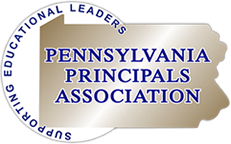In New Study, Principals Highlight Pandemic Innovations and How They Will Change Schools in the Future
October 27, 2021
The National Association of Elementary School Principals (NAESP) and the NAESP Foundation today launched Leaders We Need Now (LWNN), a series of three research briefs on how the unprecedented crises and turmoil in 2020–2021 have affected the work of principals and the impact these changes will have on the profession going forward.
The research series is the first of its kind to look at how responding to the pandemic, social injustice, and increased demands to address inequity has affected school leaders and the profession. The study, funded by The Joyce Foundation and conducted by the American Institutes for Research, consisted of 36 focus groups that met between April and June 2021. The groups were a geographically representative sample of NAESP membership, including 188 principals from 43 states.
The first brief of the series, Leaders in the Tumult: Schooling Innovations and New Perspectives From a Year Interrupted, was released today. In this report principals recount how their schools changed in 2020–2021 and reflect on which changes might endure.
They anticipate that they will continue to:
- Use flexible staffing practices to hire and retain staff, including school nurses and school counselors;
- Build partnerships with community and government agencies to help schools recover and strengthen mental health supports; and
- Scale the use of remote instructional technology to supplement and extend learning.
But principals also point to some ongoing challenges, such as:
- Future educator shortages due to low morale and early retirements;
- Diversifying the teacher and principal pipeline; and
- Healing fractured communities.
Download the first brief and executive summary. In the second and third briefs, which will be released later this fall, principals describe how the events of 2020–2021 shaped the priorities of their profession and what the principalship may look like in the future and specify what their schools need from policymakers as they continue to grapple with the effects and aftershocks of the events of 2020 and early 2021.
